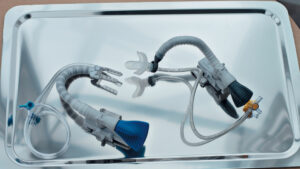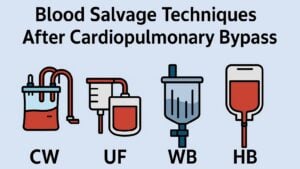OBJECTIVES:
Extracorporeal cardiopulmonary resuscitation (ECPR) is the implementation of venoarterial extracorporeal membrane oxygenation (VA-ECMO) during refractory cardiac arrest. The role of left-ventricular (LV) unloading with Impella in addition to VA-ECMO (“ECMELLA”) remains unclear during ECPR. This is the first systematic review and meta-analysis to characterize patients with ECPR receiving LV unloading and to compare in-hospital mortality between ECMELLA and VA-ECMO during ECPR.
DATA SOURCES:
Medline, Cochrane Central Register of Controlled Trials, Embase, and abstract websites of the three largest cardiology societies (American Heart Association, American College of Cardiology, and European Society of Cardiology).
STUDY SELECTION:
Observational studies with adult patients with refractory cardiac arrest receiving ECPR with ECMELLA or VA-ECMO until July 2023 according to the Preferred Reported Items for Systematic Reviews and Meta-Analysis checklist.
DATA EXTRACTION:
Patient and treatment characteristics and in-hospital mortality from 13 study records at 32 hospitals with a total of 1014 ECPR patients. Odds ratios (ORs) and 95% CI were computed with the Mantel-Haenszel test using a random-effects model.
DATA SYNTHESIS:
Seven hundred sixty-two patients (75.1%) received VA-ECMO and 252 (24.9%) ECMELLA. Compared with VA-ECMO, the ECMELLA group was comprised of more patients with initial shockable electrocardiogram rhythms (58.6% vs. 49.3%), acute myocardial infarctions (79.7% vs. 51.5%), and percutaneous coronary interventions (79.0% vs. 47.5%). VA-ECMO alone was more frequently used in pulmonary embolism (9.5% vs. 0.7%). Age, rate of out-of-hospital cardiac arrest, and low-flow times were similar between both groups. ECMELLA support was associated with reduced odds of mortality (OR, 0.53 [95% CI, 0.30–0.91]) and higher odds of good neurologic outcome (OR, 2.22 [95% CI, 1.17–4.22]) compared with VA-ECMO support alone. ECMELLA therapy was associated with numerically increased but not significantly higher complication rates. Primary results remained robust in multiple sensitivity analyses.
CONCLUSIONS:
ECMELLA support was predominantly used in patients with acute myocardial infarction and VA-ECMO for pulmonary embolism. ECMELLA support during ECPR might be associated with improved survival and neurologic outcome despite higher complication rates. However, indications and frequency of ECMELLA support varied strongly between institutions. Further scientific evidence is urgently required to elaborate standardized guidelines for the use of LV unloading during ECPR.







